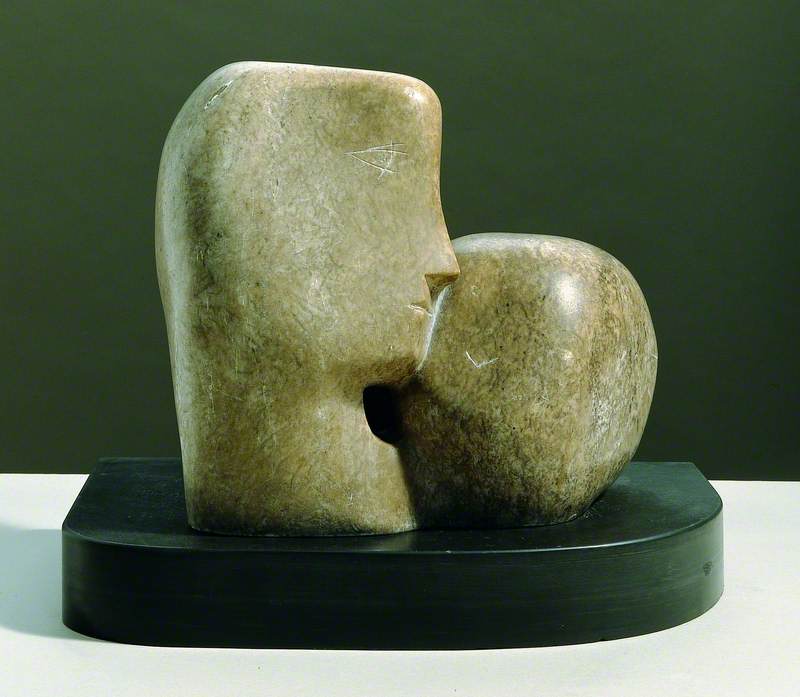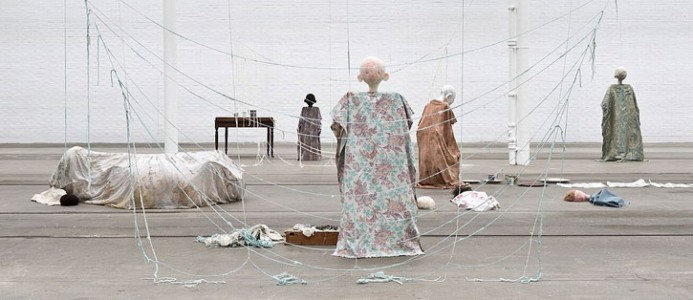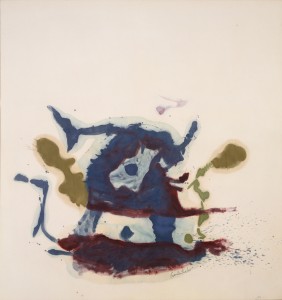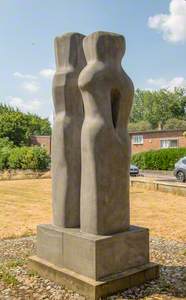Barbara Hepworth in 1949
The exhibition 'Barbara Hepworth: artist in society 1948-53' at St Albans Museum + Art Gallery from 23rd March to 8th September 2019, focuses on a five-year period at the mid-point of Barbara Hepworth’s career when she began to receive wide recognition and major public commissions. Her Hertfordshire connections inspired this exhibition, which features 20 sculptures and paintings, together with rich archival documentation taken from her own collection.
After the restrictions of the Second Work War and its aftermath, Hepworth was at last able to work on a large scale. In 1949 she moved to Trewyn Studio in St Ives, now the Barbara Hepworth Museum and Sculpture Garden, where she would remain for the rest of her life. Here she found ideal conditions, space and peace in which to work.
Eocene
1948–1949 by Barbara Hepworth (1903–1975) 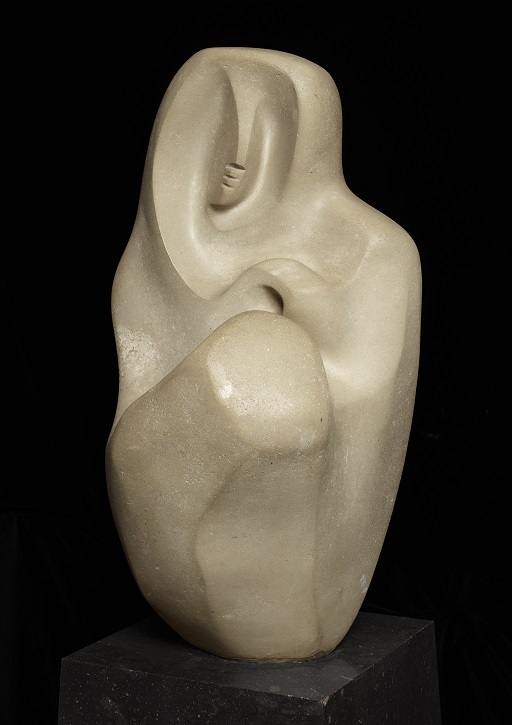
In 1950 Hepworth was commissioned to make two major sculptures for the Festival of Britain, one of which, Turning Forms (1950), a highly innovative work in concrete over a steel armature which revolved at one revolution every two minutes, came to a school in St Albans when the Festival ended. It joined an earlier carving, Eocene (1948–1949), in the city as part of the pioneering Hertfordshire Schools Collection initiated by the County’s Chief Education Officer, John Newsom. In addition, in 1951 Hepworth was commissioned to carve Vertical Forms (1951) for the new Hatfield Technical College (now the University of Hertfordshire, which is the joint organiser of the exhibition). Both Eocene and Vertical Forms, newly conserved, feature in the exhibition.
Hepworth believed passionately that the artist had a role to play in society. The celebrated drawings she made in the operating theatres of hospitals, a number of which can be seen in the exhibition, express the complete harmony that exists between a group of people working together with a common purpose, as a metaphor for an ideal society. Hepworth also made many life drawings from models in her studio at this time. It was a particularly rich phase of drawing. The close relationship between her drawing, or painting, and her contemporary sculpture in this period is explored in the exhibition.
Group III (Evocation)
1952, white marble by Barbara Hepworth (1903–1975). Courtesy of the Pier Arts Centre Collection 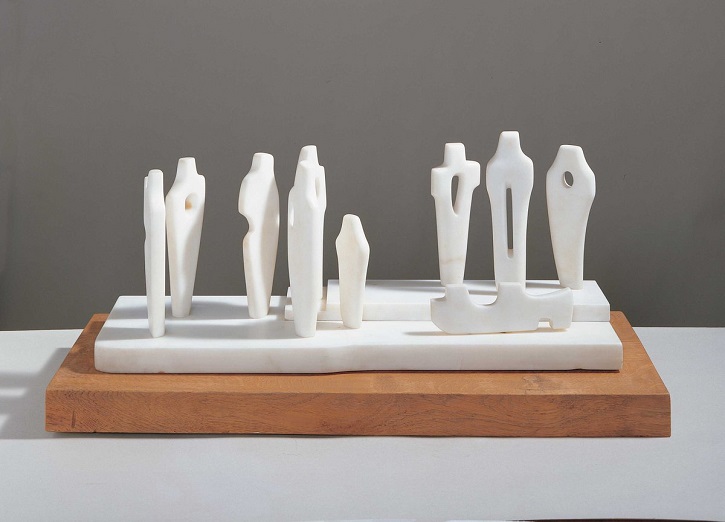
There is a sustained dialogue between abstraction and figuration in the period. After a decade preoccupied with landscape, Hepworth returned to the human form in the later 1940s, and her work is characterised by a fascination with female/male dualities and their resolution through combination in a single form or in two related ones.
She was excited by her discovery of this new theme. She described how her drawing from life and in operating theatres fed into her sculpture: 'I began to consider a group of separate figures as a single sculptural entity, and I started working on the idea of two or more figures as a unity, blended into one carved and rhythmic form. Many subsequent carvings were on this theme.' Bicentric Form and Eocene are examples in the exhibition. Each combines two figures as one. In Contrapuntal Forms, carved for the Festival of Britain and now at Harlow, two abstracted figures, male and female, are placed in close relation, forming a single harmonious unit.
One highlight in the exhibition is Hepworth’s entry to the international Unknown Political Prisoner competition, the three parts of which are reunited for the first time in 25 years. Assembled in the gallery at St Albans, we hope that this selection of sculptures and drawings, some of which have not been seen together since they were made, will throw new light on Hepworth’s work during a pivotal and fascinating period in her career.
Dr Sophie Bowness, art historian
The exhibition 'Barbara Hepworth: artist in society 1948-53' is at St Albans Museum + Art Gallery, from 23rd March to 8th September 2019.





